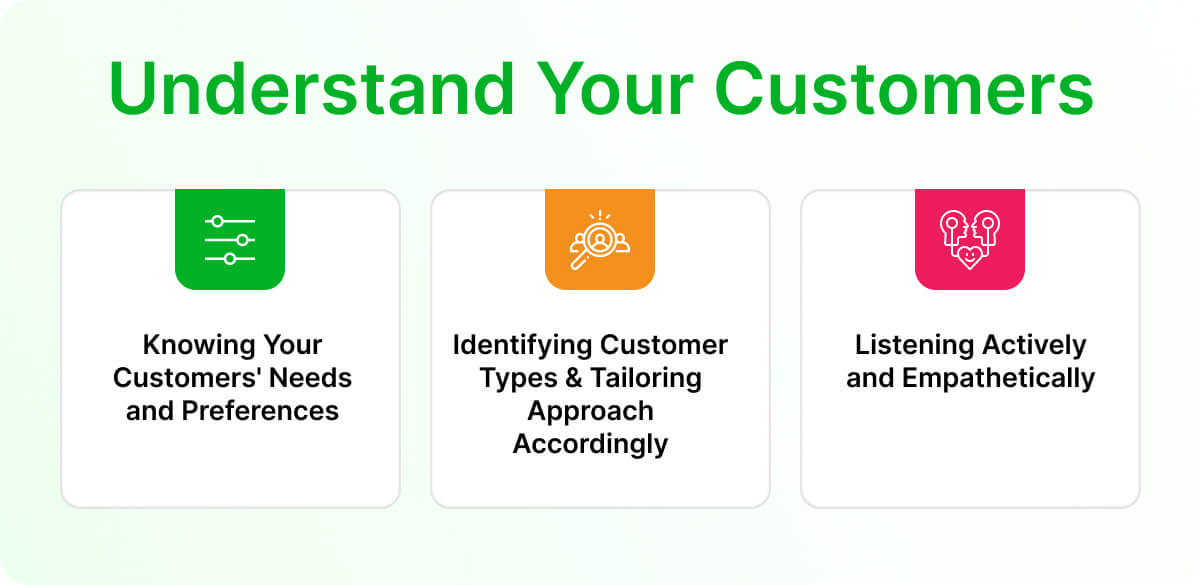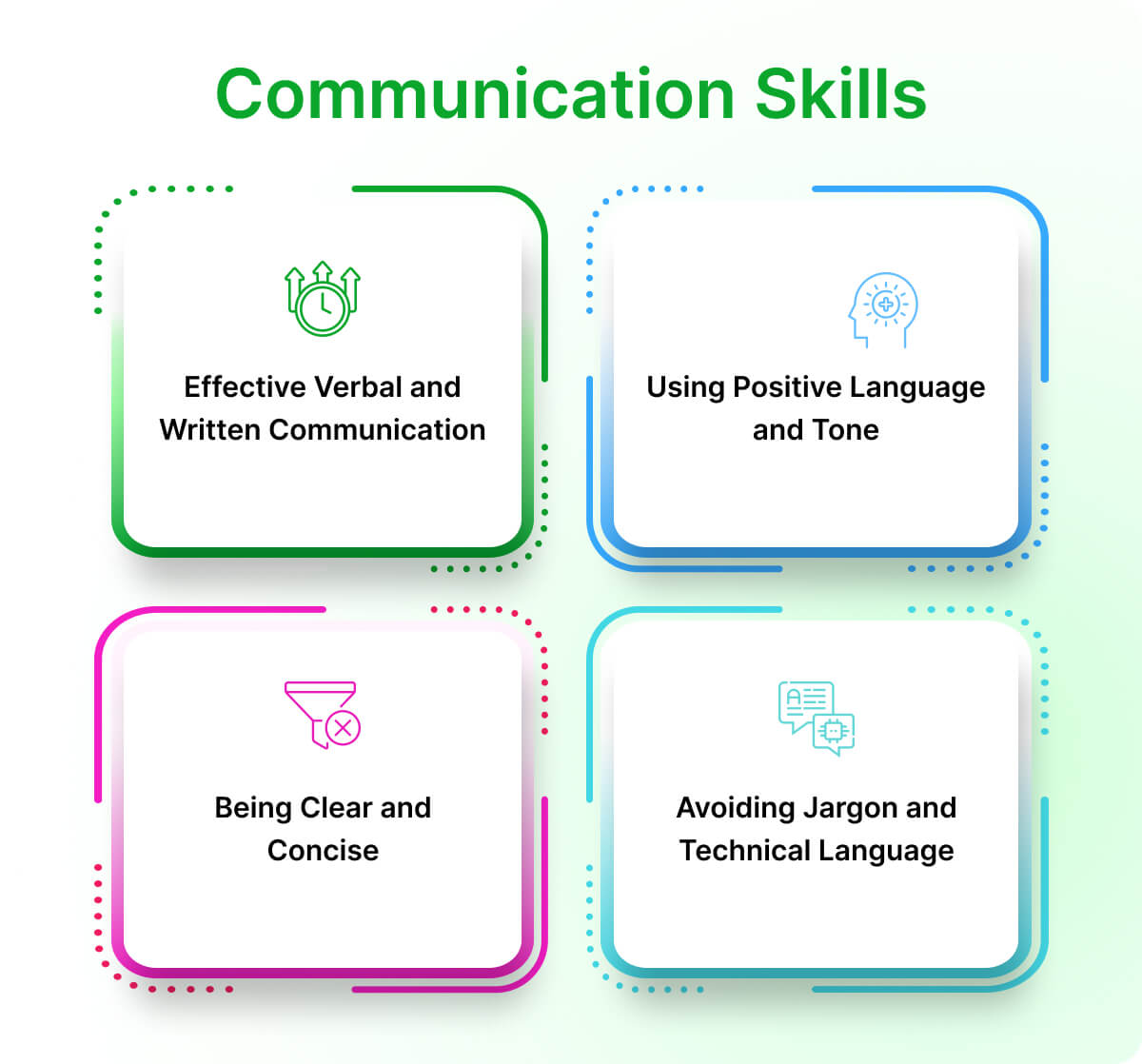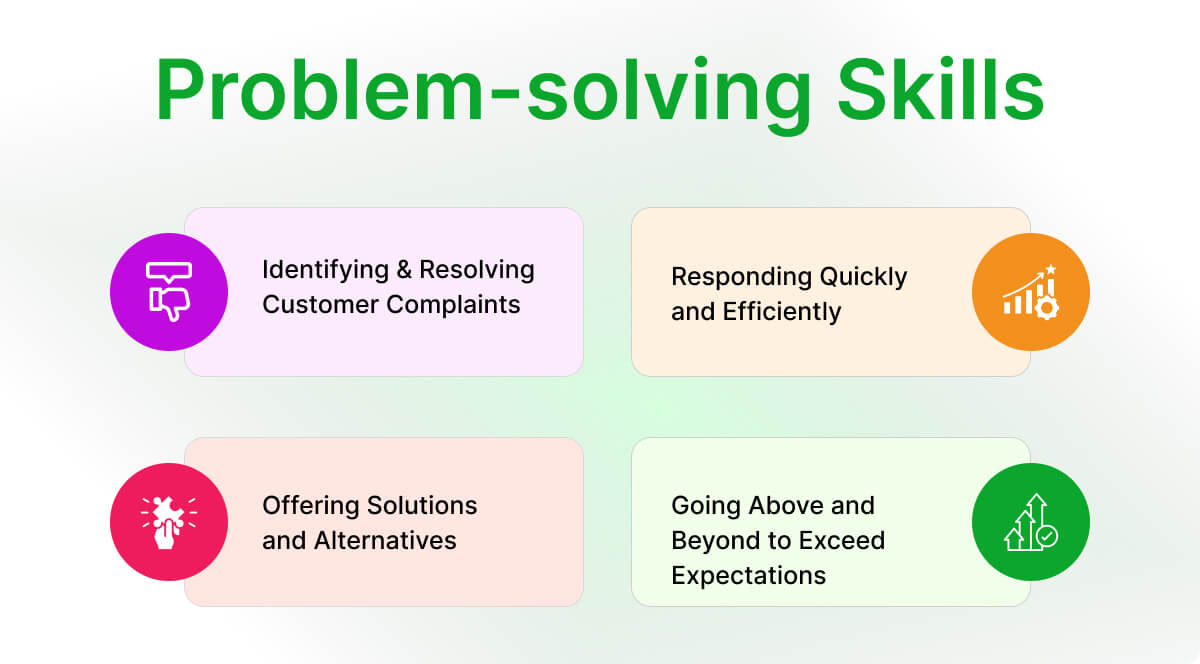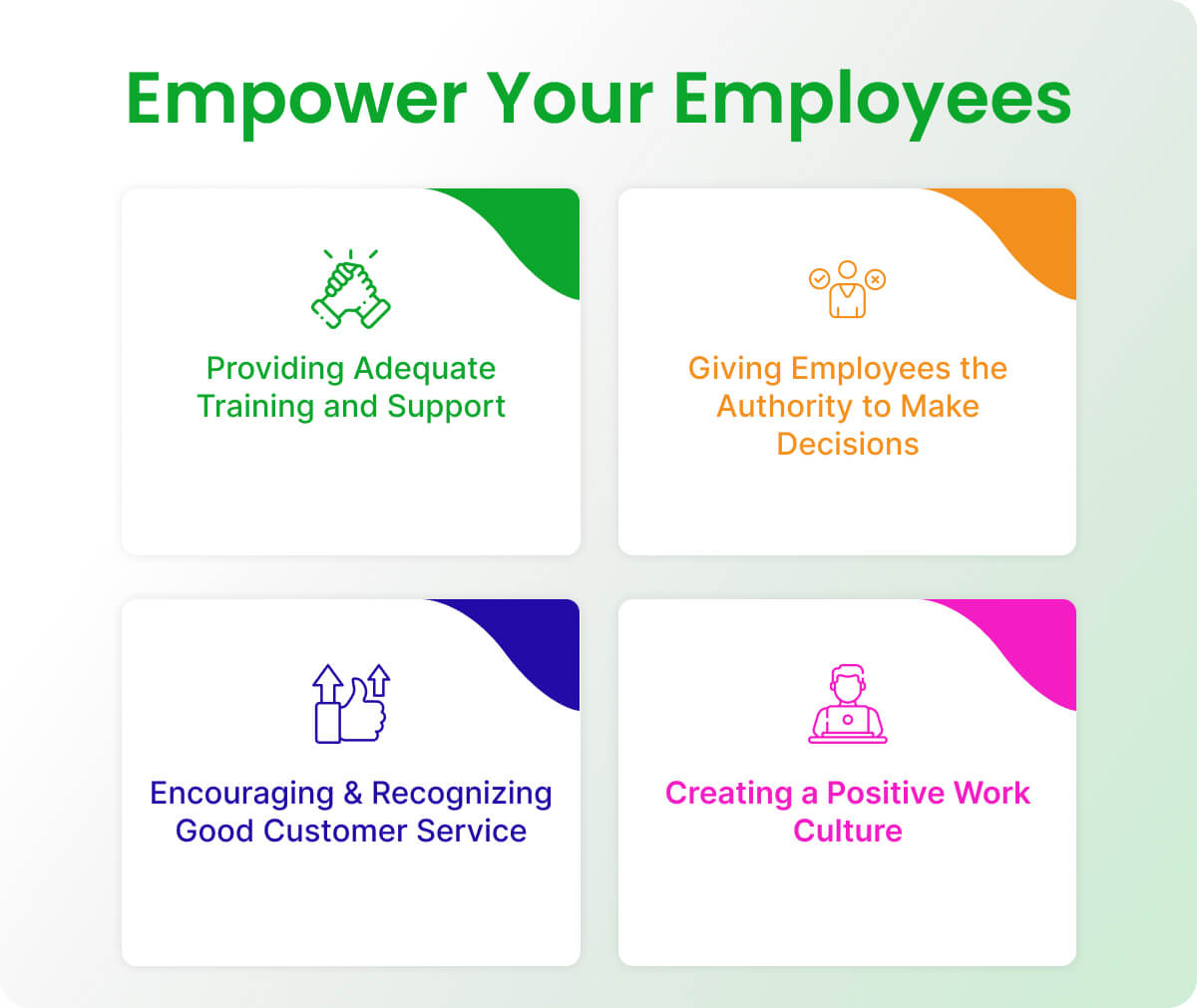 Customer Service
Customer Service

24 January, 2024

Are you looking for some strategic advantages for your business? Do you want to create a lasting impression on your existing customers and generate better leads? Then you should invest in customer service to gain all the above-mentioned benefits. I will share customer service tips on how you can deliver exceptional customer service to benefit your business.
A study by American Express showed that 86% of customers are willing to pay more for a better customer experience, while 74% say they spent more with a company because of positive customer service. (source)
In this blog post, I have applied all these formulas and have first-hand experience to assure you all these tips work exceptionally.

The most important skill you need to adopt as a business owner or marketer is understanding the customer better. Creating more effective and personalized marketing campaigns becomes easier when you know who your customers are, what they want, and how they think.
So, how do you understand your customer better? Here are the three tips you can utilize:
The first step to understanding customers is knowing what they need and prefer. You can learn about these through market research, focus groups, interviews, surveys, and other methods. These gathered data and feedback from your target audience can get you started in no time.
You can also use tools like customer personas, value propositions, or journey maps to segment your customer. These segments can be based on your customer’s behaviors, demographics, challenges, motivations, and goals.
As a business owner, you have a wide range of customers. They have different expectations, preferences, and pain points depending on their situation, personality, or stage in the buying process.
Therefore, you will need to use customer segmentation or profiling to group your customers into different types based on their characteristics and needs.
For example, you can segment your customer based on age, gender, location, lifestyle, income, loyalty, or interests. Thus, you can tailor-craft your marketing messages, offers, products, or services to each customer type accordingly.
Listening to your customer actively and empathetically is one of the excellent ways to understand your customer better. Pay attention to what they say and how they say it. Ask open-ended questions to clarify or explore their thoughts and feelings.
Reflect back on what you hear to confirm you understand them and express appreciation and empathy for their feedback. This will help build trust and rapport with your customer.
Understanding your consumers’ emotions and motivations will help identify opportunities and improve your products and services.

Communication skills can make or break your reputation, customer loyalty, and sales. When dealing with customers. Thus, every business owner needs to acquire this skill and always find ways to improve in this manner.
Here are some tips on improving your overall communication skills and communicating with your consumers better:
Both verbal and written communication is important in customer service. You need to be able to speak and write clearly, politely, and professionally.
So, how do you implement effective verbal and written communication? Here are 4 tips for you:
You can see a huge difference in how a customer perceives your service when you use positive language and tone. It helps you build rapport, trust, and satisfaction.
Here are some tips on how to use positive language and tone:
Clear and concise communication can help avoid confusion, misunderstanding, and frustration. It can also save time and effort for both you and the customer.
These are my top tips that will help you to be clear and concise:
Technical and Jargon words or phrases may be useful when you are communicating with your colleagues or experts. However, these words may confuse your customer and make the conversation complicated. Therefore, it is crucial for you to find ways to communicate with your consumers in simpler terms.
Here are some tips on how you can communicate better and avoid jargon and technical language:

Customers expect to receive quality products and services while being treated respectfully and courteously. However, sometimes things go wrong, and customers may encounter problems or issues that affect their satisfaction and loyalty. In such cases, you must handle it with proper caution and delicacy.
So, how can you handle customer complaints and issues effectively and professionally? Here are 4 steps to improve your problem-solving skills and turn unhappy customers into loyal ones:
The first step is to listen carefully and empathetically to the customer’s complaint or issue. Ask open-ended questions to clarify the situation and understand their needs and expectations. Don’t interrupt, argue, or blame the customer or anyone else. Apologize sincerely for the inconvenience and express your willingness to help.
The second step is to act promptly and resolve the issue as soon as possible. Don’t make the customer wait too long or transfer them to multiple departments. If you need more time or information, explain the reason and give them a realistic timeframe for a follow-up. Keep them updated on the progress and status of their issue.
The third step is to provide the customer with options and choices that can solve their problem or meet their needs. Don’t just say “no” or “we can’t do that.” Instead, use positive language and suggest what you can do for them. For example, if a product is out of stock, you can offer a similar product, a discount, a rain check, or a refund.
The fourth step is to go the extra mile and delight the customer with your service. Don’t just do the minimum or what is expected of you. Instead, look for ways to add value and make customers feel special and appreciated. For example, you can send them a thank-you note, a free gift, a coupon, or a referral bonus.

One of the key factors for exceptional customer service is having empowered employees. Empowered employees feel confident, motivated, and valued in their work. They can also take the initiative, solve problems, and provide excellent customer service. Empowered employees significantly boost your productivity, profitability, and customer satisfaction.
But how can you empower your employees? Here are some tips to help:
Employees need to have the skills and knowledge to perform their tasks effectively and efficiently. They should have access to the resources and tools they need to do their job. You can help your employees develop their competencies and confidence by providing adequate training and support. This will also reduce errors, frustration, and turnover.
Employees need to have some autonomy and control over their work. They need to be able to make decisions that affect their performance and customer satisfaction. You can foster a sense of ownership and responsibility by giving employees the authority to make decisions. This will also help increase their creativity, innovation, and problem-solving skills.
Employees need to clearly understand what good customer service means and how it impacts your business. Offer them feedback and recognition for their efforts and achievements. By encouraging and recognizing good customer service, you can motivate your employees to go the extra mile for your customers. You can also improve your customer loyalty, retention, and referrals with this strategy.
Employees need to feel respected, appreciated, and supported by their managers and colleagues. They also need a sense of belonging and purpose in their work. By creating a positive work culture, you can enhance your employee engagement, morale, and retention. You can also foster a collaborative, cooperative, and trusting environment.

In today’s competitive and fast-paced world, customers expect more than ever from the companies they interact with. They want quick, convenient, personalized solutions to their problems and needs.
That’s why you must embrace technology and use it to improve customer service. Technology can help you deliver better customer experiences, increase customer satisfaction and retention, and reduce costs and inefficiencies. Here are some ways you can utilize technology to enhance your customer service:
Customers have different preferences and situations when they need to contact you. Some may prefer to call you on the phone, while others may want to chat or email you online. Some may even contact you on social media platforms like Facebook or Twitter.
You need to give your customers various options to communicate with you, so they can choose the one that suits them best. This way, you can cater to their convenience and comfort and show them you value their time and feedback.
Customers appreciate it when you know who they are, what they want, and how they feel. They don’t want to repeat themselves or explain their situation whenever they contact you. They want you to recognize them and understand their needs and preferences.
You can use technology to collect and analyze customer data from various sources, such as your website, CRM system, social media, surveys, etc. You can then use this data to tailor your interactions with each customer, such as addressing them by name, offering relevant products or services, providing customized solutions, or sending personalized messages.
Technology can also help you automate some of the repetitive and mundane tasks that take up a lot of your time and resources. For example, you can use chatbots to answer common questions, provide basic information, or guide customers through simple processes.
You can also use automated emails or SMS to confirm orders, send invoices, provide updates, or request feedback. By automating these tasks, you can free up your staff’s time and energy for more complex and creative tasks that require human intervention and empathy.
Any business must constantly strive for excellence in customer service and look for ways to improve its performance. It helps you stay ahead of your competition and generate a loyal customer base.
The best way to achieve continual improvement in customer service is to follow a systematic process that involves the following four steps:
Let’s take a closer look at each step and how you can implement them in your organization.
Customer feedback is a valuable source of information helping you identify your strengths and weaknesses, as well as your customers’ needs, expectations, and preferences. You can solicit feedback from customers through various methods, such as surveys, reviews, testimonials, social media, online forums, focus groups, or direct communication.
The key to collecting effective feedback is to ask relevant and specific questions that are easy to answer and measure. You should also ensure a representative sample of customers from different segments, channels, and stages of the customer journey. Moreover, you should encourage honest and constructive feedback by assuring customers that their opinions matter and will be used to improve your service.
Your employees are the front-line representatives of your brand and the ones who interact with your customers on a daily basis. Therefore, they need to have the necessary skills, knowledge, and attitude to deliver high-quality customer service.
You should provide regular training and coaching sessions to ensure that your employees are well-equipped and motivated to perform their roles effectively.
Customer service metrics are quantitative indicators that measure various aspects of your customer service performance, such as quality, efficiency, productivity, or satisfaction. By analyzing and tracking these metrics over time, you can evaluate your progress, identify areas for improvement, and set realistic and achievable goals.
Some of the common customer service metrics that you can use are:
The final step in the continual improvement process is to use the feedback and metrics that you have collected and analyzed to make informed decisions and implement changes that will enhance your customer service performance.
You need to prioritize the most critical issues or opportunities that impact your customers’ satisfaction and loyalty. Also, communicate clearly and transparently with your employees and customers about the changes you are making and why they benefit them.
Monitor the effects of the changes that you have made and measure their outcomes using the same feedback and metrics that you used before. This way, you can determine whether the changes have succeeded and make further adjustments if needed.
Continual improvement is a vital process that can help you achieve excellence in customer service and gain a competitive edge in the market. By following these steps, you can ensure that you always meet or exceed your customers’ expectations and deliver value to them.
Customer service is not just a department but a mindset that should permeate your entire organization. You can differentiate yourself from your competitors by delivering exceptional customer service, increasing customer retention and referrals, and boosting your sales and profits.
Check also: Top 12 Customer Service Practices to Boost Business